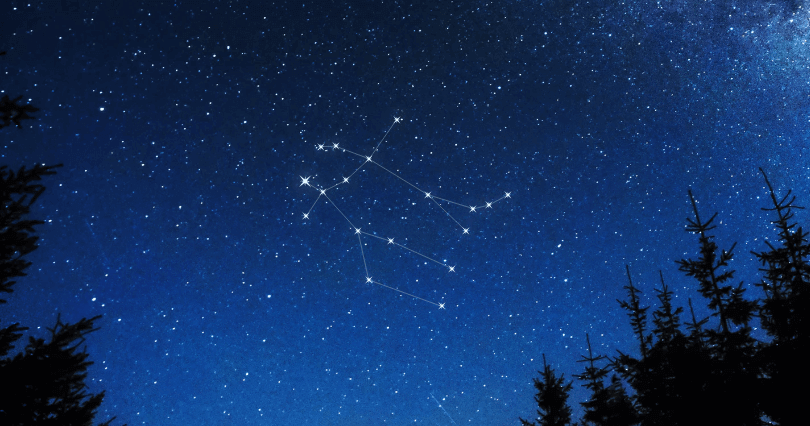Gemini Constellation

Gemini constellation is easy to find the constellation in the northern hemisphere. Its name is Latin and could be translated to ‘The Twins’. Gemini, therefore, contains two bright stars, associated with the Greek myth of brothers Castor and Pollux. The constellation was introduced in 2nd century CE, by famous Greek astronomer Ptolemy, and it is a member of the Zodiac constellations family. The constellation’s symbol is ♊, and the Twins are in ancient Greece known as the Dioscuri. Gemini is now officially recognized and listed as one of the 88 modern constellations by the International Astronomical Union.
How to find Gemini constellation in the night sky?
Gemini constellation is the 30th largest constellation in the sky, and it is set in the second quadrant of the northern hemisphere. The constellation is visible to all observers on both hemispheres and can be seen at latitudes between +90° and -60°. You may find it northeast of Orion, and between Taurus and Cancer constellations, and easiest way to search for it is to find Orion’s belt and its two brightest stars. The Castor and Pollux twins appear upside down in the southern hemisphere, and are visible best during culmination in the summer season. The neighbourhood constellations are Auriga, Cancer, Lynx, Canis Minor, Orion, Taurus, Cancer, and Monoceros constellations.
Gemini constellation is a member of the Zodiac constellations family along with Aries, Taurus, Cancer, Leo, Virgo, Libra, Scorpius, Sagittarius, Capricornus, Aquarius and Pisces constellations.
Major stars in Gemini constellations
Gemini constellation has seven stars with confirmed planets and contains one Messier object – the star cluster Messier 35. This constellation is home to several notable deep-sky objects like the Eskimo Nebula, the Jellyfish Nebula, and the Medusa Nebula. There are two meteor showers linked to Gemini constellations – the Geminids that peak in mid-December and the Rho Geminids. The brightest star is Pollux, or Beta Geminorum, with magnitude 1.14. Gemini constellation is also known for the star Castor and the neutron star Geminga.
Mythology of the Gemini Constellation
Gemini constellation is associated with the twins Castor and Pollux from Greek mythology. They are the son of Zeus, known as the Dioscuri. In some versions of this story, only one brother (Pollux) was a son of God, and the other one Castor was the son of the mortal Kind of Sparta, and therefore the mortal brother. Their mother was Queen Leda of Sparta. Zeus disguised in the swan and raped the Queen (this story is linked to constellation Cygnus) and she became pregnant, bearing two children – Helen of Troy and Polydeuces. Later on, she became pregnant with Castor and Clytemnestra, and their father was the King of Sparta, and therefore these were known as her mortal children.
Castor and Pollux were very close growing up – the first one was a horseman and fencer, and the other one was known for his boxing skills. The two were Argonauts and part of the Golden Fleece expedition. They were included in several important missions. Zeus placed both of them in the night sky as part of Gemini constellation, and the two brightest stars – Alpha and Beta Geminorum mark the heads of the twins.
In other versions of this story, Gemini constellation associates the two stars not with Castor and Pollux, but with Apollo and Heracles, two brothers and sons of the Zeus.
Choose your package
-
Lifetime Entry in Star Catalog
-
Guaranteed visible from your location
-
Star Finder app access


-
Free & express shipping available
-
PDF Emailed in Seconds
-
Everything from a Standard Star package
-
Choose a Star Constellation
-
Easier to find in the Sky




-
Free & express shipping available
-
PDF Emailed in Seconds
-
Everything from a Standard Star package
-
Name Two Stars together
-
Extra bright and Unique 2-Star Pair






-
Free & express shipping available
-
PDF Emailed in Seconds



